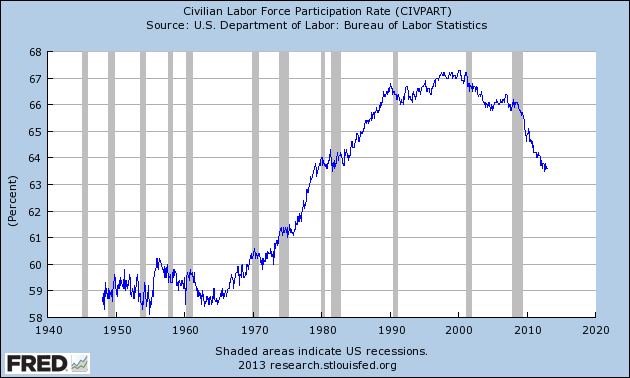“Statistics can be used to say anything.”
Many readers are familiar with this cliché, but few understand its real significance . Numbers don’t lie, meaning the raw data which we collect on a nearly infinite number of subjects. Statistics, on the other hand, are rarely just raw data. Instead, they are numbers that have been massaged (i.e. manipulated) with various adjustments.
Deception and deceit enters into the picture when our governments (and charlatan economists ) create their statistics, and do so by making adjustments which are completely indefensible from an analytical standpoint. These adjustments don’t improve upon the raw data in terms of adding clarity, but rather they pervert the data into numbers which cease to have any resemblance to the real world.
Thus, with their adjusted statistics, these frauds-with-numbers can make the U.S. Great Depression look like a recovery. An even more obvious example is found in all the imaginary “jobs” the U.S. government claims to have created during its imagined recovery .

Fewer and fewer people are working in the U.S. every year, and virtually every month. Since the start of the “recovery,” the U.S. economy has lost an additional 3+ million jobs. The “11 million new jobs” boasted of by the political puppets, and manufactured by charlatan economists, never existed. They were completely created with mammoth – and bogus – adjustments.
“Numbers don’t lie – people do.”
This brings us to the silver market, and some numbers that illustrate some unequivocal truths. There are few better sources for numbers on silver than precious metals icon, Eric Sprott. In a recent interview with The Daily Coin , Sprott provided a few interesting numbers.
Silver is mined at an 11:1 ratio to gold. This is raw data. This becomes significant when we look more raw data numbers: the natural occurrence of these two metals in the Earth’s crust. Silver is approximately 17 times as plentiful as gold. Therefore, all things being equal, we should expect silver to be mined at a near-identical ratio of 17:1.
Instead, silver is under-produced by roughly 50%. How? Why?
We know it could not possibly be due to lack of interest or demand. Historically, over a span of thousands of years, the price ratio between silver and gold was a very steady 15:1. This means that (over thousands of years) humanity has exhibited a slight price preference for silver. It occurs at a 17:1 ratio, but people have been willing to pay for it at a slightly higher 15:1 ratio.
In more modern times, we have proof that humanity’s desire for silver hasn’t waned at all. As was explained in a previous commentary , the silver market has been in a state of supply deficit for thirty consecutive years – something totally unprecedented with any other commodity market in history.














Leave A Comment